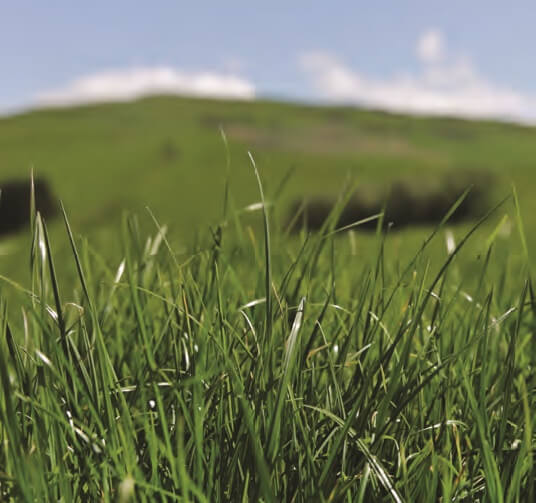Enhancing your perennial pastures with spring oversowing in September and October whilst sufficient soil moisture is available for emerging seedlings is a common practice for south east Australian farmers looking to drive more production.
Here Notman Pasture Seeds explores the advantages, disadvantages and in-depth suggestions on optimising spring sown pasture.
Spring sowing advantages
- Fast establishment, early vigour
- Boost spring silage & hay yields
- Improve your pasture base heading into summer
- Lower risk of pugging
- Improved soil temperatures & daylight hours
- Better control of germinating weeds
- Better establishment of perennial clovers (i.e. white & red clover)
- More time to do thorough soil preparation and spring weed control
Spring sowing disadvantages
- Moisture stress – no guarantee rainfall in necessary growing period
- Weed & summer grass invasion
- Insects destroying emerging pasture
- Forage crops offering higher yield on a smaller area – takes pressure off other grazing areas of the farm
Enhance harvest density and quality
Improve silage and hay DM yields with spring sown italian ryegrasses such as Surge Italian Ryegrass. Over sowing with fast establishing italian ryegrasses provides exceptional yield, and luscious leaf growth. Surge is ideal in this scenario this September as it will improve pasture density when it comes time to harvest for silage & hay.
And with soil temperatures & daylight improving (instead of decreasing in Autumn) you’ll see improved vigour out of newly sown pasture.
Permanent pasture? Breaking dormancy earlier
Spring sowing diploid perennial pastures will provide leafy quality feed for longer, and give better re-growth post silage provided moisture is available.
A key advantage of high quality diploid perennial ryegrasses such as Matrix is their ability to break dormancy earlier by responding well to the first rains in Autumn when feed pressure is often at its highest.
Provided there are no periods of greater than 70-80 days of no significant rainfall through Summer & Autumn (which would appear to decimate plant density), sowing perennial pastures offer extremely good home grown feed value.
Matrix SE will also have less seed head production following the initial heading period than many other diploids as it has been selected to stay vegetative after heading.
Use your past paddock history
Take into consideration your past paddock history &/or spring sowing success including timing, persistence of new pastures, soil fertility, soil moisture availability when considering to sow new pastures.
Each environment is unique so for further advice speak to Peter (0418 512 035), Andrew (0408 439 795) or Adam (0418 512 035).
Minimise cultivation
Excellent seedbed condition with limited trash is a vital factor for optimum spring germination (i.e. fine, firm, good seed/soil contact). Minimise cultivation, especially on lighter soils, as retaining soil moisture is important.
Sowing depth – lower end
Plant at lower end of recommended seeding depths because moisture is usually ample early in the spring.
Early weed control essential
Early weed control is essential for optimum establishment. Plan to spray early to remove weed competition for that much needed soil moisture and nutrient. For larger broadleaf weeds use higher rates & accompany with a high grade adjuvant for improved weed plant intake.
Potential risks of no weed control are broadleaf weeds and grasses taking advantage of ideal growing conditions and dominating pasture swards in your silage and hay.
Oversowing pugged pastures – 25% losses
Pugged pastures can result in pasture production losses of up to 25% – and encourage weeds to invade pastures, particularly difficult to control weeds such as dock. Good early management can restore paddocks back to production for late spring & summer and ensure better response to autumn moisture.
Minimal impact on grazing
Reseeding at the time of maximum grass growth may well mean you are not short of grazing elsewhere on the farm, so can afford to have that areas out of production. Conversely, by taking a paddock out at this time you are potentially losing grass production at its highest peak
Damage Evaluation
10-20% Damage
Oversow with Matrix SE or Surge at 15kg/ha
20 – 35% Damage
Oversow with Matrix SE or Surge at 20kg/ha
35-50% Damage
Oversow with Matrix SE or Surge at 25kg/ha
>50% Damage
New pastures: Oversow Matrix SE or Surge at 25kg/ha
Old pastures: Spray out and sow Top Crop forage crop such as Forage Rape, Chicory, Turnips, Millet, Sorghum or customised blend.
Emerging seedlings
Use better quality seed for improved early vigour. Emerging seedlings need to keep any extra energy. Farmers who have seed of differing quality should plant the better seed into the early planting window.
Alternatives to re-sowing pasture
With excellent regrowth potential, improved drought tolerance and reliability in drier conditions, Top Crop Blends offer an alternative to oversowing damaged pastures or underperforming paddocks – Learn more about Top Crop Blends here.
- Top Crop Brassica & Herbs
- Top Crop Brassica, Herbs & Millet
- Top Crop Millet & Rape
- Top Crop Millet & Pasja II








